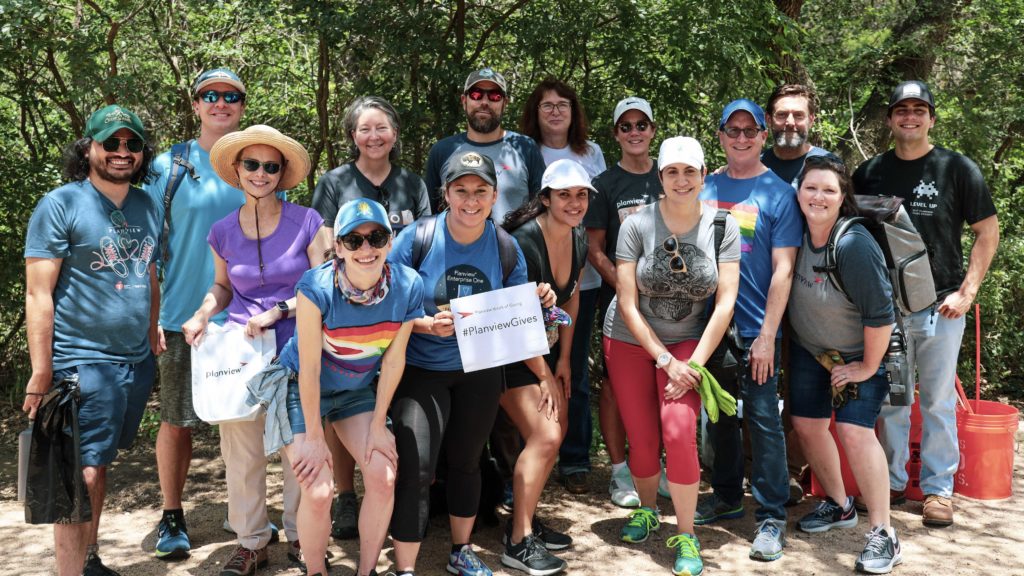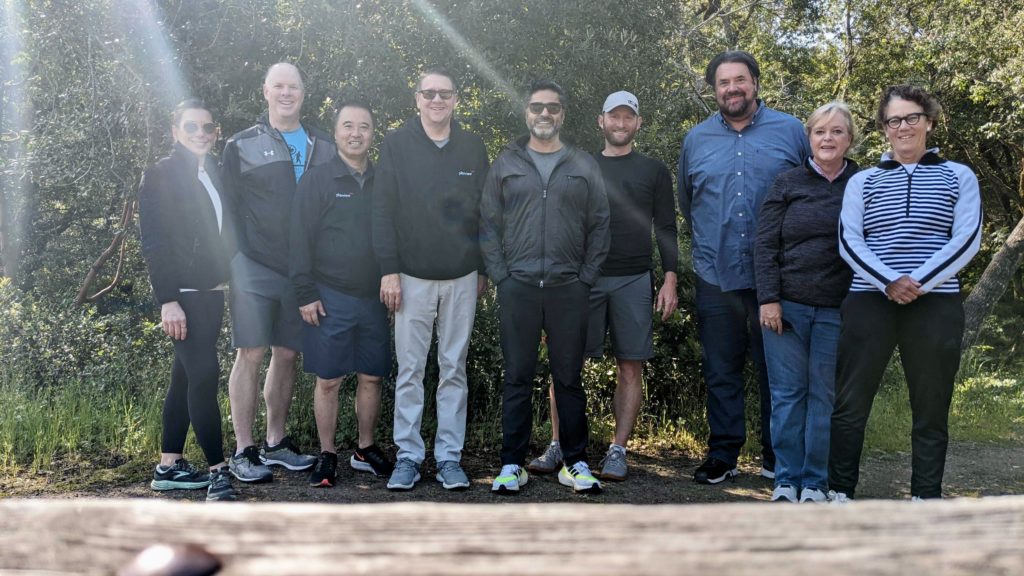
How important are in-person connections in an increasingly remote work environment? The short answer is “very,” especially since there are a lot fewer of them.
Planview is on a mission to “Build the Future of Connected Work,” – so I spend a lot of time thinking about the human aspects of connection. Not just the team-to-top, cross-functional, idea-to-impact dimensions of Connected Work but the person-to-person, individual connections that make our work more meaningful, insightful, and valuable.
What led to today’s largely hybrid – or remote – workforce was, of course, the global pandemic. It was, among other things, an unplanned social experiment – an unintentional but valid test of the viability of a fully remote workforce.
Until the pandemic, the question of whether workers would and could be productive while working from home was largely hypothetical. But it quickly became a very real scenario on a much larger scale than anyone could have predicted.
We learned from those first months and then years that people are just as productive at home as in the office. In fact, a 2021 study by Owl Labs found that only 1% of workers surveyed said they were less productive in a remote environment.
What we also learned is that different work options can benefit both the employee and the employer:
- Employees enjoy greater flexibility, focus time, work-life balance, and the ability to spend more quality time with their loved ones.
- Employers can choose from a truly unlimited talent pool, reduce office expenses, and leverage flexibility as a recruiting tool.
That doesn’t mean that the benefits of meeting face-to-face with coworkers are moot. Many times, the most purposeful meetings are face-to-face. Here’s why:
Company culture is not experienced through a monitor
The takeaways of remote work vary widely from person to person. While a parent of three might feel more connected to their family than ever, a single person in their 20s working at home all the time might feel isolated. We lose something when we can never come together face-to-face, even for those who enjoy their hybrid or remote work. There is something about connecting as human beings that happens more tangibly in person than it does across a screen. The company’s culture cannot be gleaned simply by wearing a T-shirt with a company logo while sitting in a remote office.
The reality is that humans are complex creatures with mental, emotional, and social needs that are more nuanced than the in-office vs. work-from-home conversation seems to offer.
Video conferencing software has its limitations
Even with the best video conferencing software, there’s a communication barrier inherent in online communication. It can be difficult to tell who is speaking during a video call or know when it’s appropriate to interject or contribute to the conversation. Being on a video call requires less of ourselves than meeting in person, which means that we are less present and less fully there.
The office isn’t the best place for individual work…
The OwlLabs survey found only 36% of workers believe the office is the best place for individual work – individual contributors, who simply need an internet connection and the ability to focus on doing their best work, are hindered by the distractions usually present in an office environment.
Employees feel more trusted in a remote work environment when they are trusted to manage their own time, make their own schedule, and get their work done without a manager breathing down their neck. However, they feel more included when they are in the office, with the unspoken caveat there being as long as they aren’t forced to be there full-time.
…but some collaboration is best face-to-face
There are certain types of collaboration – brainstorming, planning, delicate conversations, bonding – that seem to be best-done face-to-face. At Planview, though we are remotely dispersed, we meet monthly in person as a leadership team for this reason. This time together helps us get to know each other better, build trust, and have those conversations that benefit from being together the “old-fashioned way.”
As advanced as video conferencing software can be — and we use it constantly — there’s something particularly bonding about being face-to-face: watching someone’s body language and seeing their genuine reactions without the filters or the mute button.
It seems that a truly hybrid approach, where employees have the flexibility they need to live their best lives — as well as the benefits of intentional gathering — is best for everyone.
Our offices need to evolve for hybrid collaboration
There is a need for evolution in both our physical office spaces and how they are utilized, as well as the ways in which we gather face-to-face. Many office buildings were designed for individual work with occasional meetings of small groups – and certainly not for the type of hybrid interactions that modern work requires.
Seamless connectivity, both in and out of the office, is essential for a functional hybrid environment. In reality, most physical offices are not optimized to accommodate meetings with a mix of in-person and virtual attendees in a way that makes everyone feel included equally.
Meeting the needs of a hybrid workforce means rethinking office spaces, so they are optimized for in-person and virtual meetings.
Flexible office design elements – such as moveable walls that can adjust the size of space to meet the needs of different groups – are a great way to increase the functionality of existing spaces. Upgrading video conferencing software (and any hardware necessary to improve audio/video quality) can also go a long way.
Make in-person meetings more purposeful
Employees get the most value from meeting face-to-face if this is done with intention and purpose. Companies that demand employees travel to the office simply so they can work quietly side by side all day are thinking more about theory than practice. Companies that provide flexibility around which days employees come into the office may find they sometimes have only one person staffing a department, and that person is then meeting with their peers through videoconferences.
Save in-person meetups for those activities that benefit most from being face-to-face: Brainstorming, planning, and bonding. At Planview, our leadership team flourishes with in-person facetime to reflect on the past and conduct future planning.
I learn so much about my peers and deepen my understanding and respect for them during these meetups, especially when we aren’t (technically) working. The most valuable conversations tend to happen when we’re out of our usual element, such as on a group hike or when we’re eating a meal together.
One of my favorite new traditions is Planview’s “Force for Good” initiative, which encourages employees to team up and volunteer for a charity that matters to them.
Team members are encouraged to meet up (in person if possible) with other team members to spend the day giving back and getting to know each other. Team members will often get to know people from completely different departments during these volunteering sessions – people they might otherwise never have met. It’s hard to say who benefits most from these – the employees, who experience the feeling of inclusion, connection, and togetherness that only comes from being together, or the charities.
Connected Work = Connected People
Building meaningful, sustainable connections is mission-critical when teams are distributed around the country or even dispersed globally. The past few years have taught us just how important it is to build human bridges across the digital platforms that have enabled us to move into this modern, hybrid future.
Connected Work means simply bringing people together to deliver what matters most. Value is created when the best tools and people come together. The purposeful connection between people requires us to reconsider when, where, and how we meet, both virtually and in person. But one thing is for certain – our need to connect isn’t going away anytime soon.




